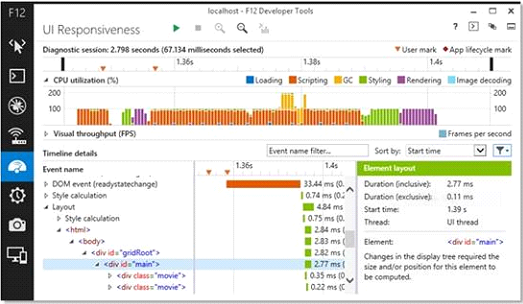Microsoft today announced the launch of a developer channel for Internet Explorer.
While most popular browsers offer numerous release channels, Microsoft has always held back from this idea and instead launched preview versions of its upcoming releases a few weeks or months before the actual launch. That’s changing. Now, developers and early adopters can install a developer version of IE that can run alongside their existing IE11 installs on Windows 7 SP1 and Windows 8.1.
Microsoft says the idea here is to give developers a better understanding of the features the team is working on. The company first lifted some of the secrecy that has historically surrounded its browser development a few weeks ago by posting a list of features the team was working on, or at least considering, for inclusion into IE. Now, it’s following this up by actually shipping the bytes, too.
 Microsoft tells me the developer channel will get updates “when there are meaningful changes” the company wants to push out to developers for testing. To keep the developer channel separate from the existing IE11 installs on Windows 7 and 8.1, the browser will use Microsoft’s Application Virtualization technology to virtualize the install. This, however, means the app incurs a small performance penalty because it doesn’t have direct access to your hardware, so Microsoft recommends that this version shouldn’t be used to measure site performance. It also shouldn’t be installed in an enterprise environment.
Microsoft tells me the developer channel will get updates “when there are meaningful changes” the company wants to push out to developers for testing. To keep the developer channel separate from the existing IE11 installs on Windows 7 and 8.1, the browser will use Microsoft’s Application Virtualization technology to virtualize the install. This, however, means the app incurs a small performance penalty because it doesn’t have direct access to your hardware, so Microsoft recommends that this version shouldn’t be used to measure site performance. It also shouldn’t be installed in an enterprise environment.
In this first release, Microsoft is shipping a couple of new tools for developers, including new tools for debugging, as well as better memory and user-interface responsiveness analytics. IE now also supports access to the Xbox controller for web-based gaming, and the team has improved WebGL performance and added support for a number of WebGL features like 16-bit textures and triangle fans.
Clearly, Microsoft has understood that if it wants to keep IE relevant, it needs to open up the development process a bit more. This change will also allow Microsoft to get a bit more feedback from developers before it launches a new version (and maybe get some early feedback on security issues, too). What’s unclear, though, is whether Microsoft will also use this channel to test any user-interface changes.
